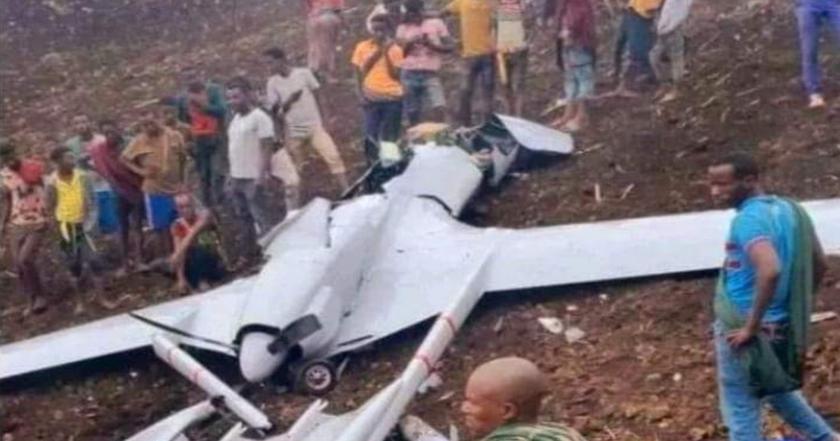SOURCE: AFI

A Turkish-made Bayraktar TB2 drone, known for its use in Ukraine, has reportedly been downed or crashed in Ethiopia’s Oromia region. This incident raises questions about the drone’s effectiveness in different conflict zones.
Reports suggest a Bayraktar TB2 drone, equipped with laser-guided MAM-L munitions, was lost in Ethiopia’s Horo Guduru Welega Zone. While details remain unclear, this incident highlights the drone’s vulnerability in active conflicts.
Early in the conflict, the TB2 reportedly assisted Ukraine in achieving notable military successes. Ukrainian forces utilized the drone’s capabilities to conduct precision strikes against Russian assets. However, as the conflict progressed, Russian forces enhanced their air defenses, significantly limiting the effectiveness of the TB2. A Ukrainian military official noted that out of the initial fleet of over 50 TB2 drones, only a handful have survived, highlighting the vulnerabilities of the drone against advanced air defense systems.
The Bayraktar TB2 has been heavily marketed by Turkey as a revolutionary tool in modern warfare, with numerous promotional materials highlighting its successes. However, the real-world performance in highly contested environments reveals a different picture. The drone’s susceptibility to advanced air defense systems and electronic warfare measures has raised questions about the sustainability of its initial hype.
The gap between marketing and battlefield performance may influence the procurement decisions of countries considering the TB2. Future buyers may demand evidence of the drone’s effectiveness against advanced adversaries before committing to purchases.
The TB2 drone’s story is a complex one, with successes and limitations. While it might not be a guaranteed game-changer in every situation, the Ethiopian and Ukrainian experiences offer valuable insights for future drone warfare strategies and development.